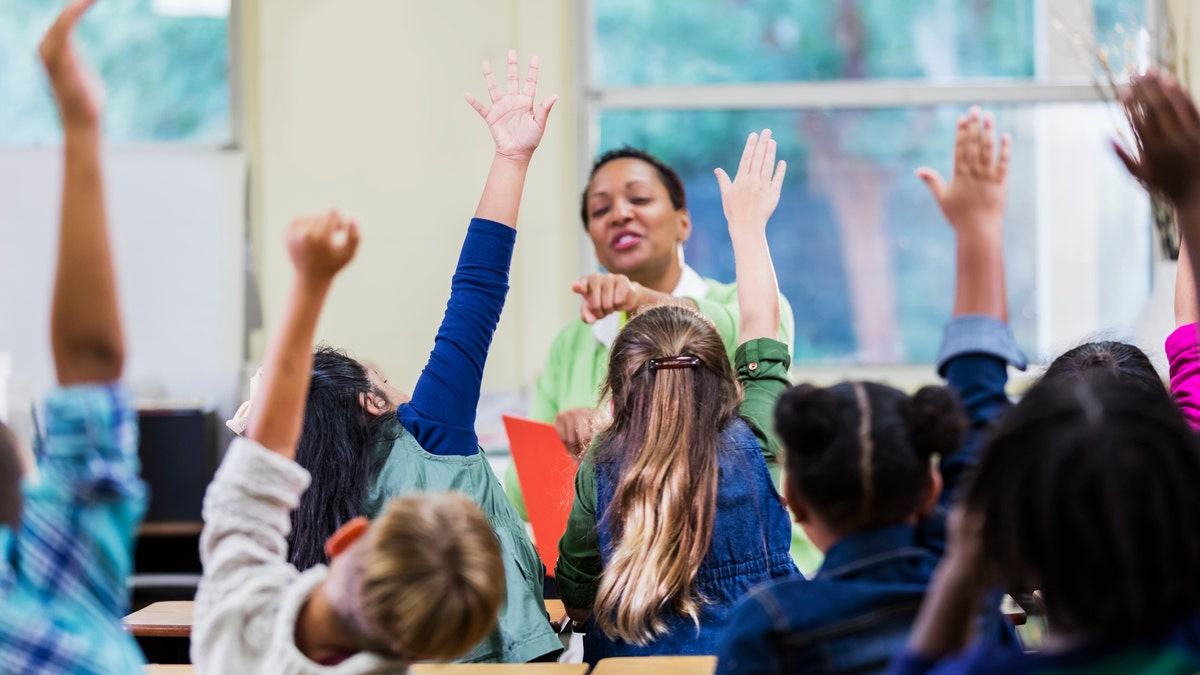Expert says Black, Hispanic parents are flocking to charter schools, 'looking for options that were better'
Debbie Veney, the co-author of a report that showed charter schools making significant gains since 2019, spoke with Fox News Digital about the phenomenon.
For many years, EdChoice has featured two important data points on its website homepage: where parents want to send their children to school and where they actually send their children to school.
Guess what? The data has never matched up. Not by a long shot. When surveyed, 39% of American parents say they would prefer to send their child to a traditional public school; 36% would send their child to private school; 9% would choose a charter school; and 9% would educate at home.
That’s what parents want. What they get is quite different.

Prior to the pandemic, many state choice programs, although broad, were limited in who could apply. (iStock)
Only 20% of parents send their child to a private or charter school or educate their child at home. A whopping 80% attend traditional public schools. The gap between parent preferences and actual enrollment is totally out of alignment.
40 YEARS LATER, OUR SCHOOLS ARE AT GREATER RISK
The good news is the gap is closing rapidly in recent years.
Thanks in part to growth in new school choice programs with broad eligibility, increased awareness of non-traditional options, and a rise in the number of parents demanding more control in their children’s learning environments, over 1 million students are now participating in a private school choice program in the United States.
In 2020, just shy of 600,000 students were using an educational choice program.
The data is the most recent provided by states, and reflects enrollment in education savings account (ESA), voucher, tax-credit scholarship, tax-credit ESA, or refundable tax credit programs. While some states provide participation data for the most recent school year, others lag, so actual enrollment in these programs is likely higher.
Combine that with the number of new choice programs with universal eligibility created in recent years (12 since 2022), we can expect participation to continue to skyrocket in the coming years.
This school choice momentum, which had been building for years and years, exploded after COVID. Parents took what was solid growth and supercharged the movement for educational freedom.
Prior to the pandemic, many state choice programs, although broad, were limited in who could apply. After the pandemic, states like West Virginia, Arizona, Florida, Arkansas, Oklahoma, Indiana and many others expanded their programs to include basically every child in the state.
As a result, nationwide, there are 75 school choice programs spread across 33 states, plus Washington, D.C., and Puerto Rico. In all, nearly 22 million students, or nearly 40%, now have access to a private school choice program in their state.
And all this is good for students, taxpayers, families and society. Of the 188 empirical studies conducted to evaluate the impact of private school choice programs on important outcomes – including participant and public school student’ test scores, parent satisfaction, fiscal effects, integration, civic values, and more – 84% find a positive effect and 10% find no effect.
It’s no wonder three in four Americans (including those with school-aged children) consistently voice support for educational choice policies.
When Nobel Prize-winning economist Milton Friedman and his wife, Rose, founded EdChoice in 1996, they did so with the understanding that a system of universal school choice – one in which states not only provide all families access to a variety of programs, but offer adequate funding and broad use by parents – would provide a path to a stronger society.
CLICK HERE FOR MORE FOX NEWS OPINION
At the time, a mere 10,000 students across the country were participating in choice programs. But through a strong focus to expand programs in state houses and educate families since then, we’ve slowly begun closing the gap between what parents want and what parents get.
Friedman said, "Achievement of effective parental choice requires an ongoing effort to inform the public about the issues and possible solutions, an effort that is not episodic… but that is educational. It requires also the cooperation of the many groups around the country who are devoted to improving the quality of our schools, whether governmental or private."
While many in the school choice reform space have rightfully celebrated the legislative wins of recent years, and will surely celebrate with us as we mark an important milestone in private school participation, it’s critical we remember that the work is just beginning.
CLICK HERE TO GET THE FOX NEWS APP
Milton and Rose Friedman envisioned a truly innovative and vibrant education system that not only allows families to choose from a variety of school types like those we know now, but one that empowers families with a competitive, innovative marketplace full of unencumbered choices.
If we keep that in mind, it will only take five years instead of 25 to get to the next million students.






